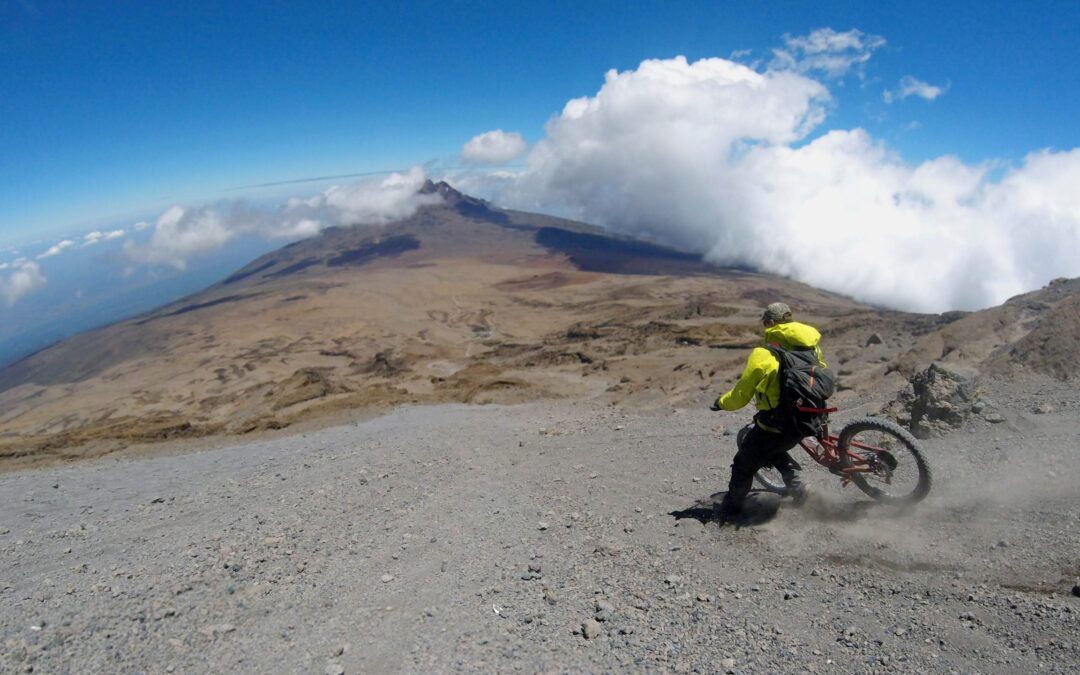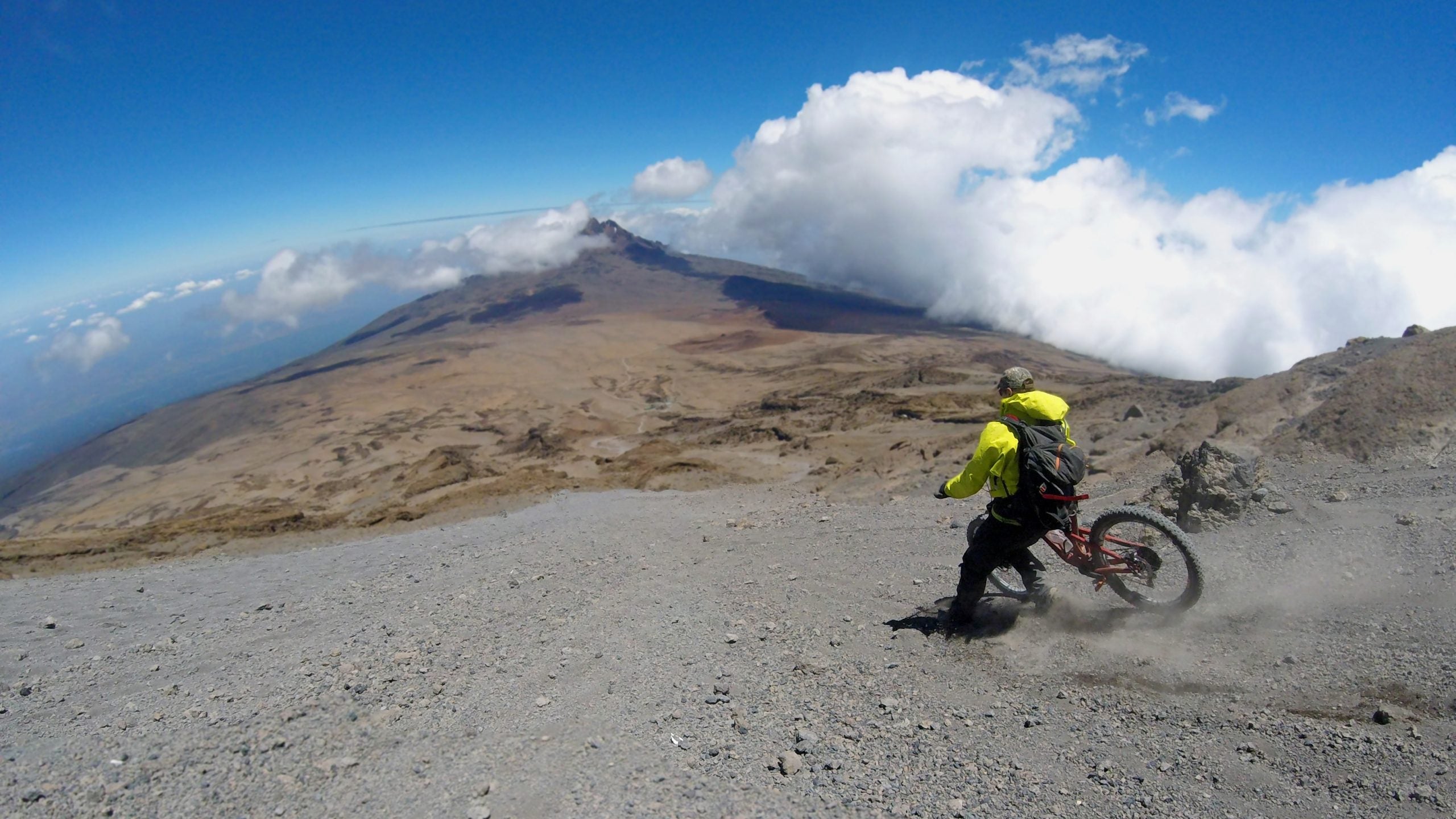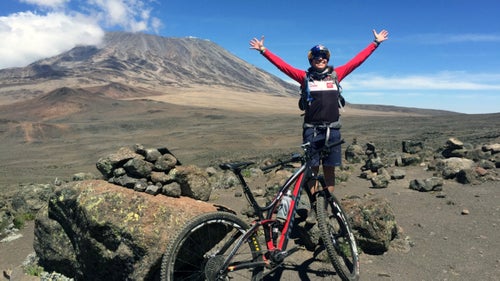When most people think of conquering Kilimanjaro, they picture grueling hikes and challenging altitudes, but how about tackling it on two wheels? Mountain biking on Kilimanjaro offers a unique, exhilarating perspective on this iconic peak. It’s an adventure that merges endurance with scenic beauty.
Mountain biking on Kilimanjaro dates back to the early 21st century, presenting a thrilling alternative to traditional climbing. This daring pursuit showcases the diverse, rugged terrain while providing a physical challenge. Over 10,000 adventure seekers have tried biking Kilimanjaro, seeking both challenge and the unparalleled vistas.
Exploring the Terrain: What Makes Kilimanjaro Unique for Mountain Biking?
Mountain biking on Kilimanjaro promises an adventure unlike any other. The terrain is incredibly diverse, taking cyclists through lush rainforests, heathlands, and alpine deserts. Each zone offers its visual and technical challenges. For instance, the dense jungle teems with wildlife and requires keen maneuvering skills. The higher altitudes present a stark, rocky landscape, making the ride both thrilling and challenging.
One key highlight is the diversity of ecosystems encountered. In mere hours, bikers can transition from tropical rainforest to barren, volcanic rock. This rapid change keeps the experience engaging and dynamic. The weather can shift dramatically, adding an extra layer of excitement. It’s all about adapting to the ever-changing environment.
- Lush rainforests filled with wildlife
- Heathlands with unique flora
- Barren volcanic landscapes
- Snow-capped peaks at higher altitudes
Aside from the diverse scenery, the physical challenge of mountain biking on Kilimanjaro is immense. Bikers face steep gradients, rough paths, and fluctuating weather conditions. These factors require both mental stamina and physical endurance. Yet, the reward of standing atop Africa’s highest peak makes every effort worthwhile. It’s a test of true grit and determination.
Varied landscapes from lush forests to alpine deserts
Mountain biking up Kilimanjaro exposes you to an incredible variety of landscapes. Starting in lush forests, the journey begins among tall trees, singing birds, and possibly the sight of monkeys leaping from branch to branch. Nature’s canopy provides shade while colorful flowers add to the vibrant atmosphere. The air is moist, and the ground is often slippery, requiring careful navigation. It’s a tranquil start that contrasts sharply with the terrains that lie ahead.
As bikers ascend, they move into heathlands, where shrubs and grasses dominate. Here, the plants are shorter, offering a broad view of the surrounding slopes. This zone sees fewer animals, but unique plants like giant groundsels and lobelias flourish in this cooler climate. The landscape is drier and the paths more defined, making the ride smoother but still challenging. The open space allows for faster speeds, adding a rush of excitement.
The alpine desert is the next remarkable transition. This area features sparse vegetation and rocky pathways. The temperature drops significantly, and the wind picks up, making it essential to have appropriate gear. Bikers need to be cautious of loose stones and sudden drops. The barren, moon-like terrain is both eerie and captivating, pushing riders’ skills to the limit.
Finally, the journey reaches the arctic zone, where snow and ice reign supreme. This final stretch is the most challenging, with freezing temperatures and thin air. The snowy paths require not only endurance but also technical prowess to prevent slipping. Reaching this high-altitude desert is an accomplishment in itself. The view from the top, surrounded by a blanket of white, is the ultimate reward.
The Challenge and Thrill: Why Bikers are Drawn to Kilimanjaro
One of the biggest draws of mountain biking on Kilimanjaro is the sheer challenge it presents. The climb is physically demanding, with steep ascents and rocky paths. Each pedal stroke requires effort, as the altitude takes its toll. The terrain tests bikers’ endurance, making every inch gained a victory. It’s not just a ride; it’s a test of strength and resilience.
The thrill of speed combined with the unpredictable terrain adds to the excitement. Sharp turns, sudden drops, and quick elevation changes keep bikers on their toes. The varied landscape means that no two sections of the ride are the same. Riders must constantly adapt to the conditions, which can change rapidly. This unpredictability makes each journey uniquely thrilling.
- Steep ascents challenge physical strength
- Rocky paths test biking skills
- Unpredictable weather keeps the ride exciting
- Vast, changing landscapes
The social aspect also plays a significant role. Many bikers tackle Kilimanjaro in groups, fostering camaraderie and shared experiences. The journey becomes about more than just individual achievement. Sharing the struggle and the triumph with others enhances the overall experience. It creates bonds and memories that last a lifetime.
Key Takeaways
- Mountain biking on Kilimanjaro is a thrilling adventure.
- The terrain changes from forests to alpine deserts.
- This activity requires strong physical and mental endurance.
- Riders experience rapid shifts in environment and weather.
- The reward is stunning views and an unforgettable journey.



